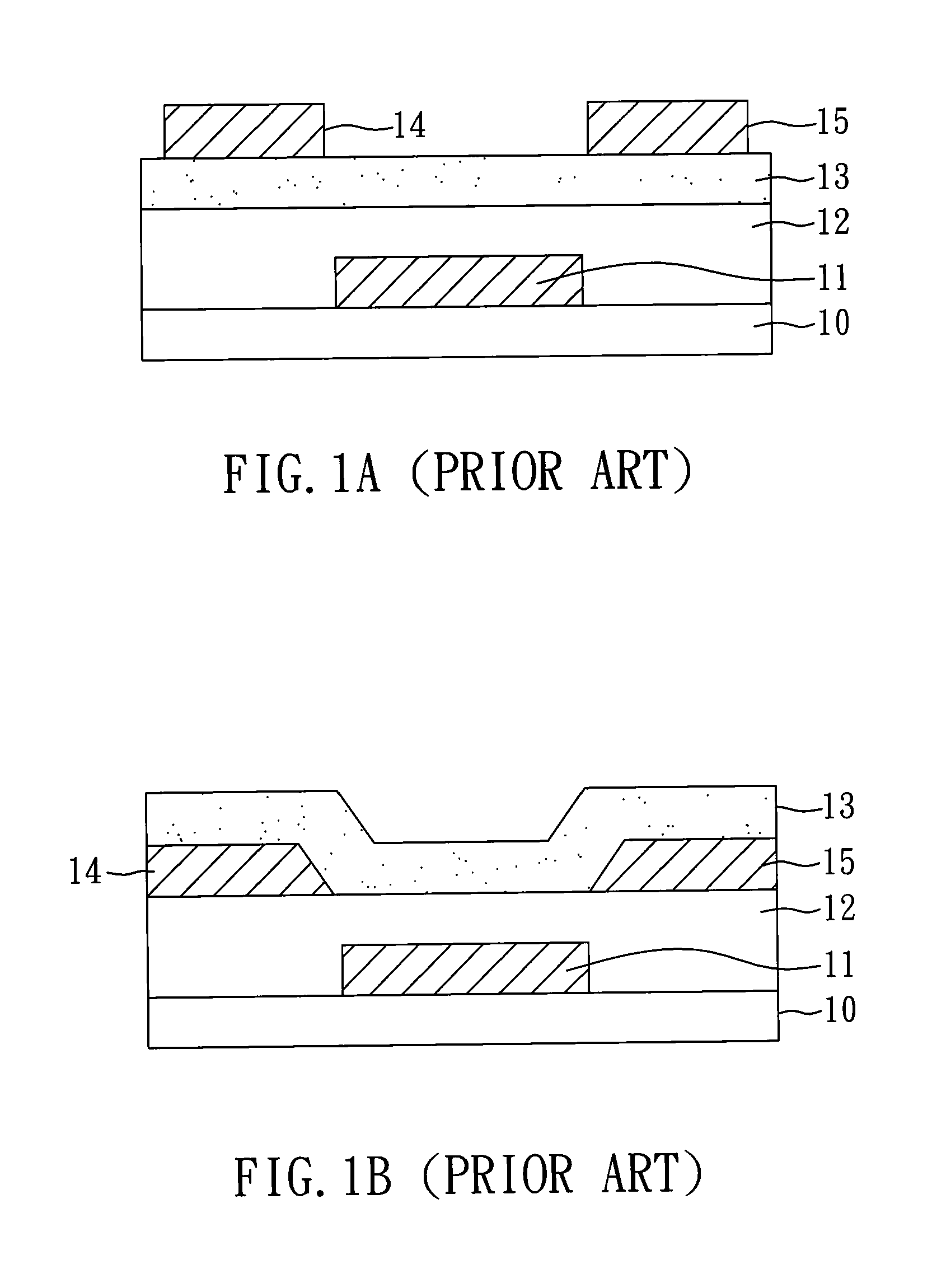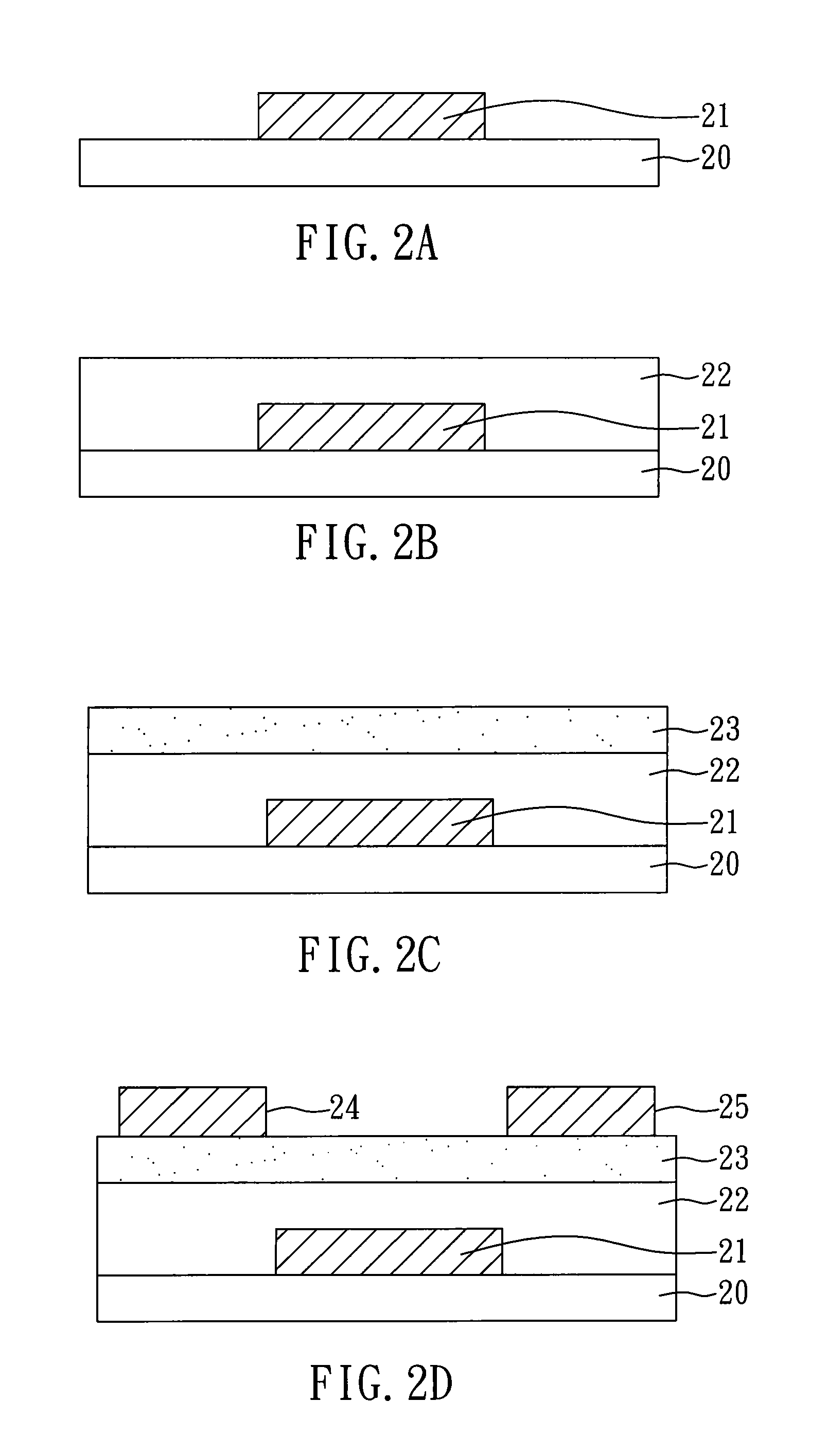Otft using paper as substrate and silk protein as insulating material and method for manufacturing the same
a technology silk protein, which is applied in the field of organic thin film transistor (otft), can solve the problems of pentacene not matching well with the conventional dielectric material, the sputtering process instrument is very expensive, and the process is complex, and achieves high performan
- Summary
- Abstract
- Description
- Claims
- Application Information
AI Technical Summary
Benefits of technology
Problems solved by technology
Method used
Image
Examples
embodiment 1
Top Contact OTFT
[Preparation of a Silk Solution]
[0026]First, 10 wt % of an aqueous solution of Na2CO3 was provided and heated. When the solution was boiling, silkworm cocoon (natural silk) was added thereto, and the solution was kept boiling for 30 min to remove sericin. Then, the silk without sericin was washed by deionized water to remove the alkali salt adhered on the silk. After a drying process, refined silk, i.e. fibroin, was obtained.
[0027]Next, the refined silk was added into 85 wt % of phosphoric acid (H3PO4) solution (20 ml), and the resulted solution was stirred until the refined silk was dissolved. Then, the phosphoric acid solution containing the refined silk was put into a membrane (Spectra / Por 3 membrane, molecular weight cutoff=14000) and dialyzed with water. The dialysis process was performed for 3 days to remove the phosphate ions. After the dialysis process is completed, a filter paper is used to filter out impurities, and an aqueous solution of fibroin is obtaine...
embodiment 2
Bottom Contact OTFT
[0040]As shown in FIG. 5A, a paper substrate 20 was provided, and a gate electrode 21 and a gate insulating layer 22 was formed on the paper substrate 20 sequentially. In the present embodiment, the preparing methods and the materials of the paper substrate 20, the gate electrode 21, and the gate insulating layer 22 are the same as those illustrated in Embodiment 1. In addition, in the present embodiment, the thickness of the gate electrode 21 was about 100 nm, and the thickness of the gate insulating layer 22 was about 500 nm.
[0041]Next, the evaporation process was performed on the gate insulating layer 22 to form a patterned metal layer through the same evaporation process for forming the gate electrode described in Embodiment 1, wherein the patterned metal layer was used as a source electrode 24 and a drain electrode 25, as shown in FIG. 5B. In the present embodiment, the material of the source electrode 24 and the drain electrode 25 was Au, and the thickness o...
PUM
 Login to View More
Login to View More Abstract
Description
Claims
Application Information
 Login to View More
Login to View More - R&D
- Intellectual Property
- Life Sciences
- Materials
- Tech Scout
- Unparalleled Data Quality
- Higher Quality Content
- 60% Fewer Hallucinations
Browse by: Latest US Patents, China's latest patents, Technical Efficacy Thesaurus, Application Domain, Technology Topic, Popular Technical Reports.
© 2025 PatSnap. All rights reserved.Legal|Privacy policy|Modern Slavery Act Transparency Statement|Sitemap|About US| Contact US: help@patsnap.com



